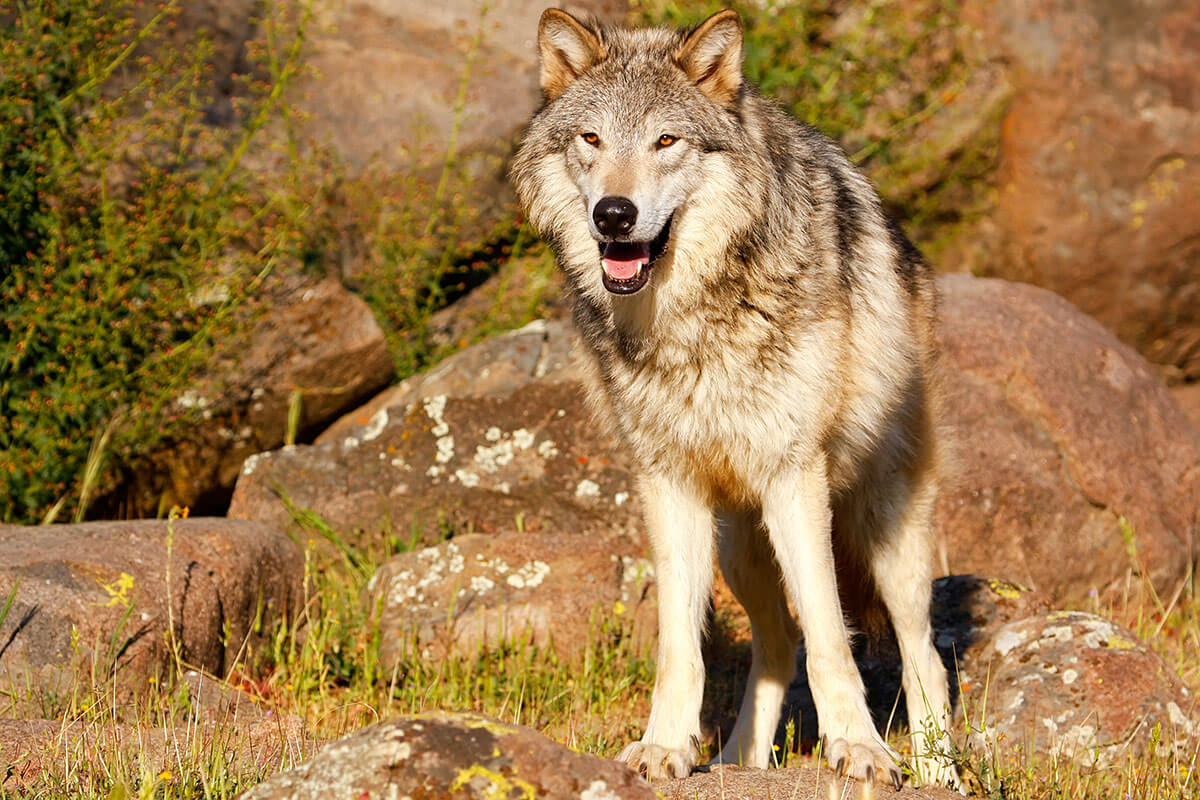Gray Wolves

The gray wolf is also known as the timber wolf and western wolf. It is native to the wilderness and remote areas of Eurasia and North America. It is the largest member of the wolf family, with males averaging 95 – 99 pounds and females 79 – 85 pounds. It is distinguished from other members of the species by its larger size and less pointed features, particularly on the ears and muzzle. Its winter fur is long and bushy, and predominantly a mottled gray in color, although nearly pure white, red or brown to black also occur.
It is a social animal, traveling in nuclear families consisting of a mated pair, accompanied by the pair’s adult offspring. The gray wolf is typically a top predator throughout its range, with only humans and tigers posing a serious threat to it. It feeds primarily on larger game, such as deer, wild boar, sheep and goats, though it also eats smaller animals, livestock, carrion, and garbage.
The gray wolf is one of the world’s best-known animals, with probably more books written about it than any other wildlife species. It has a long history of association with humans, having been despised and hunted in most pastoral communities because of its attacks on livestock, while conversely being respected in some agrarian and hunter-gatherer societies. Although the fear of wolves is pervasive in many human societies, the majority of recorded attacks on people have been attributed to animals suffering from rabies. Over the years, wolves have developed a fear of humans from hunters and shepherds.
Source: en.wikipedia.org/wiki/Wolf
